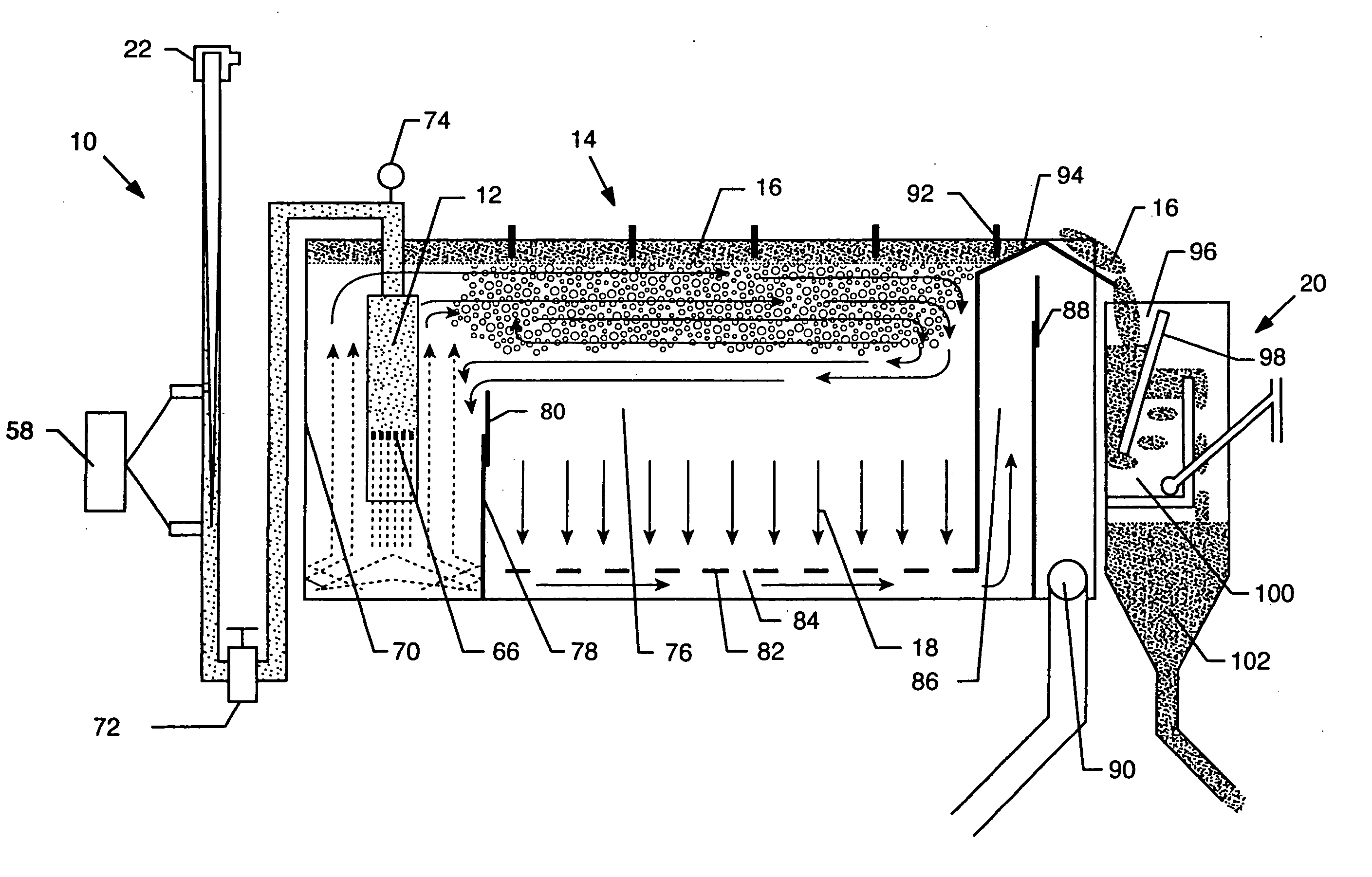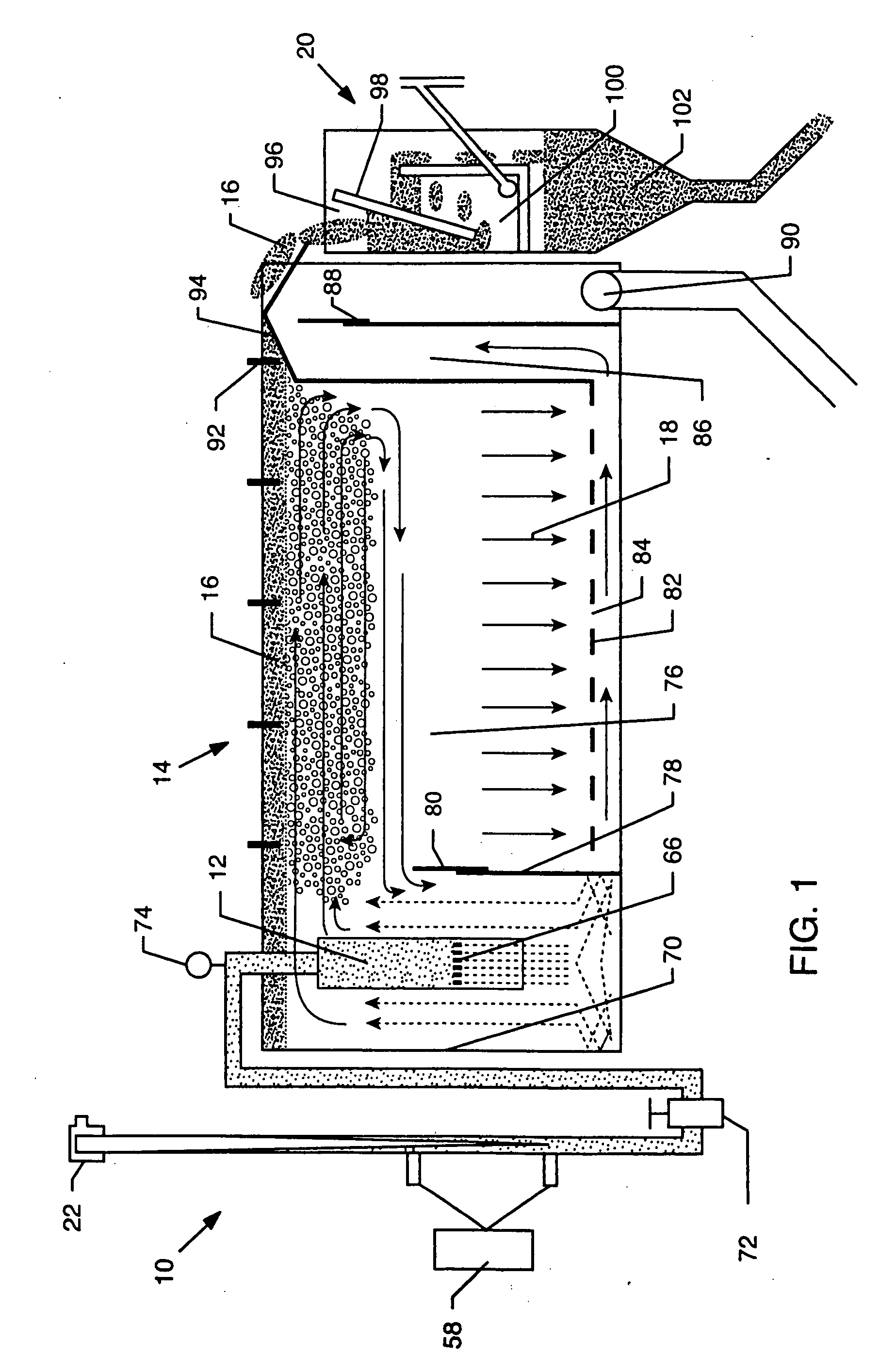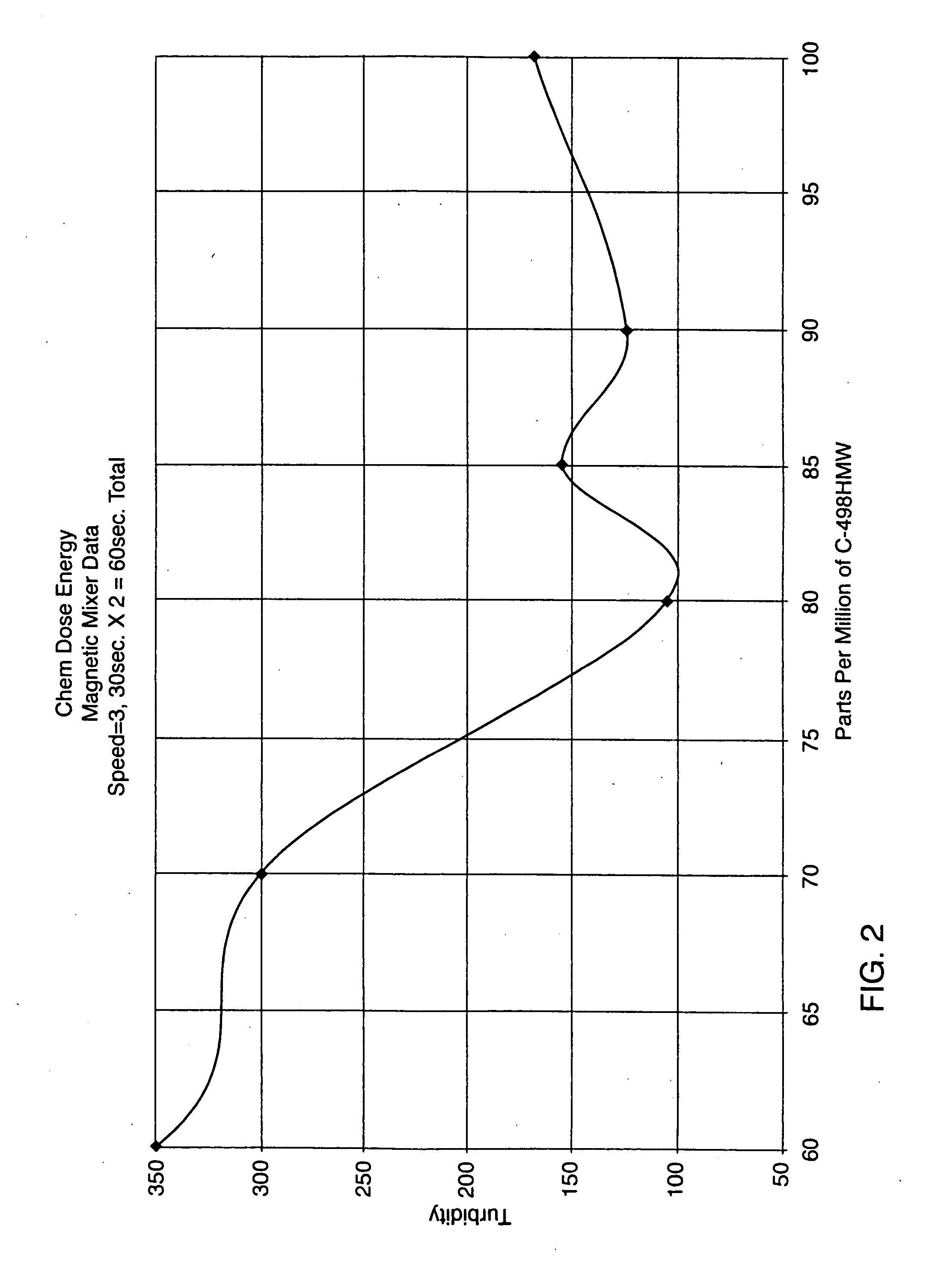System and method of gas energy management for particle flotation and separation
a technology of gas energy management and particle flotation, which is applied in the direction of separation process, multi-stage water/sewage treatment, dissolving, etc., can solve the problems of flocculation break-up and/or permanent destruction, waste of valuable and expensive coagulant and polymer chemicals, and the flocculation of flocculation to achieve the effect of efficient and cost-effective, and accelerate the drainage of water
- Summary
- Abstract
- Description
- Claims
- Application Information
AI Technical Summary
Benefits of technology
Problems solved by technology
Method used
Image
Examples
Embodiment Construction
[0053] As shown in the accompanying drawings for purposes of illustration, the present invention resides in an efficient and cost-effective system for treating liquids. The system is shown in FIG. 1 and includes a mixing apparatus 10 fluidly coupled to a depressurizing device 12 which is disposed within a flotation tank 14. The mixing apparatus 10, as will be more fully described herein, is particularly designed to mix chemical additives, gas, and the like to the contaminated liquid such that the gas is entrained in the liquid at a very small size so as to adhere onto solid particles and flocculants such that as the liquid passes through the depressurizing device 12, the bubbles enlarge in size, raising the floccs and solid contaminants towards the surface of the flotation tank 14. Eventually, the floated particles form a sludge or froth 16, while the decontaminated liquid 18 sinks towards the bottom of the flotation tank 14. The froth 16 is removed to a dewatering subsystem or appa...
PUM
| Property | Measurement | Unit |
|---|---|---|
| diameter | aaaaa | aaaaa |
| diameter | aaaaa | aaaaa |
| diameter | aaaaa | aaaaa |
Abstract
Description
Claims
Application Information
 Login to view more
Login to view more - R&D Engineer
- R&D Manager
- IP Professional
- Industry Leading Data Capabilities
- Powerful AI technology
- Patent DNA Extraction
Browse by: Latest US Patents, China's latest patents, Technical Efficacy Thesaurus, Application Domain, Technology Topic.
© 2024 PatSnap. All rights reserved.Legal|Privacy policy|Modern Slavery Act Transparency Statement|Sitemap



